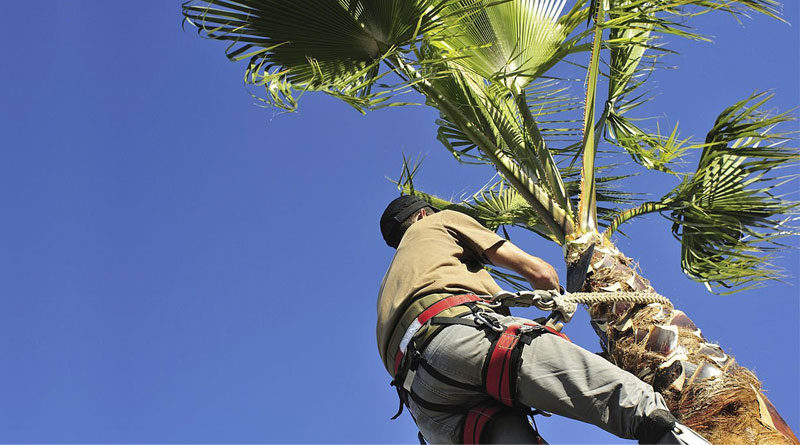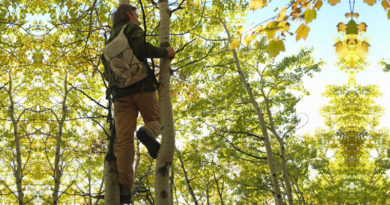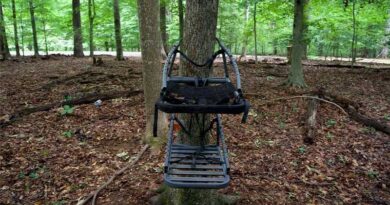The Myth of the Tree without Branches: Exploring the Truth
A tree can’t live without branches. Branches are an essential part of a tree’s structure. They are responsible for providing support, allowing for the exchange of gases and nutrients, and enabling the tree to grow and reproduce. Without branches, a tree would not be able to survive or carry out its vital functions. However, some trees naturally have very few branches. They include certain types of palm trees, which have a single, unbranched trunk topped with a cluster of leaves. But even these trees still technically have branches, as the leaves are considered to be specialized branches.
Why Trees Need Branches
Branches play a crucial role in a tree’s growth and survival.
Support and Stability
Branches provide trees with the support and stability they need to withstand wind, snow, and other environmental stresses. A tree with no branches would not have the necessary support to stay upright and grow tall.
Photosynthesis and Nutrient Exchange
Branches also play a critical role in photosynthesis and nutrient exchange. Leaves attached to branches are the primary sites of photosynthesis. They absorb sunlight and carbon dioxide, convert them into sugars, and release oxygen. Without branches and leaves, the tree would not be able to produce its food. Its growth and survival would also be compromised.
Branches are also essential for the uptake of nutrients and water from the soil. The roots of the tree absorb water and nutrients from the soil and transport them through the trunk and branches. These nutrients and water are necessary for the tree’s growth and survival. Without branches to transport them, the tree would not receive the resources it needs to thrive.
Reproduction and Survival
In addition to these functions, branches also play a crucial role in the reproduction and survival of trees. Many trees rely on their branches to produce flowers and fruit, which are essential for their reproduction. In some cases, branches are necessary for the pollination process or for supporting the weight of fruit.
Moreover, some trees depend on branches for their survival. For example, epiphytic plants (such as orchids and ferns) grow on the branches of certain trees. They rely on them for support and access to sunlight and nutrients. Without branches, these plants would not have a habitat or the resources they need to grow.
Types of Trees with Few Branches
While a tree can’t exist without branches, there are still some types of trees that naturally have very few branches.
Palm Trees
One example of such a tree is the palm tree. Palm trees have a single, unbranched trunk that is topped with a cluster of leaves known as a crown. The leaves of the palm tree are considered specialized branches, as they play a similar role in photosynthesis and nutrient exchange.
Columnar Trees
Another type of tree that typically has few branches is the columnar tree. Columnar trees have a tall, narrow shape, resembling a column or a pillar, with branches that grow only near the top of the trunk. Examples of columnar trees include the Italian cypress, the Arizona cypress, and the Mexican blue palm.
Other Examples
Other trees with minimal branching include some types of conifers. The lodgepole and bristlecone pine, have a narrow, spire-like shape and very few branches. Some species of eucalyptus trees also have a tall, narrow shape with minimal branching.
Are There Really Trees Without Branches?
While it is true that all trees have branches, the term “branch” can be somewhat ambiguous and may have different meanings in different contexts. When we think of a branch, we may imagine a large, woody limb extending from the trunk of a tree, but in a botanical sense, the term “branch” can refer to any type of lateral growth that arises from a main stem or trunk, including leaves, buds, and specialized structures like spines or thorns.
Exploring the Definition of a “Branch”
Given this broader definition, it is possible to find examples of trees with minimal branching. For example, some species of conifers have very short and needle-like leaves that grow directly from the trunk or main stem. It gives the appearance of a tree without branches. However, even these trees technically have branches, as the needle-like leaves are considered specialized branches.
In general, trees that grow in arid environments or on steep slopes may have limited branching, as this helps to conserve water and reduce wind resistance. Some types of palm trees and cacti are also known for their minimal branching, with leaves growing directly from the trunk or stem.
Can a tree exist without any Branches?
It is technically possible for a tree to exist without any branches. But this tree would likely be unable to carry out the essential functions necessary for its growth and survival. As such, the idea of a tree that has no branches is largely hypothetical. In reality, all trees require some form of lateral growth to thrive.
Conclusion
Branches are essential for supporting the structure of the tree. They facilitate photosynthesis and nutrient exchange and allow reproduction and survival. While some trees, such as palms and columnar trees, have little branching, even these trees have specialized lateral growths that serve similar functions. Finally, the plant kingdom’s diversity of shapes and structures reflects plants’ incredible adaptability to their environments. The unique properties of each tree contribute to the overall richness and complexity of our natural world.




